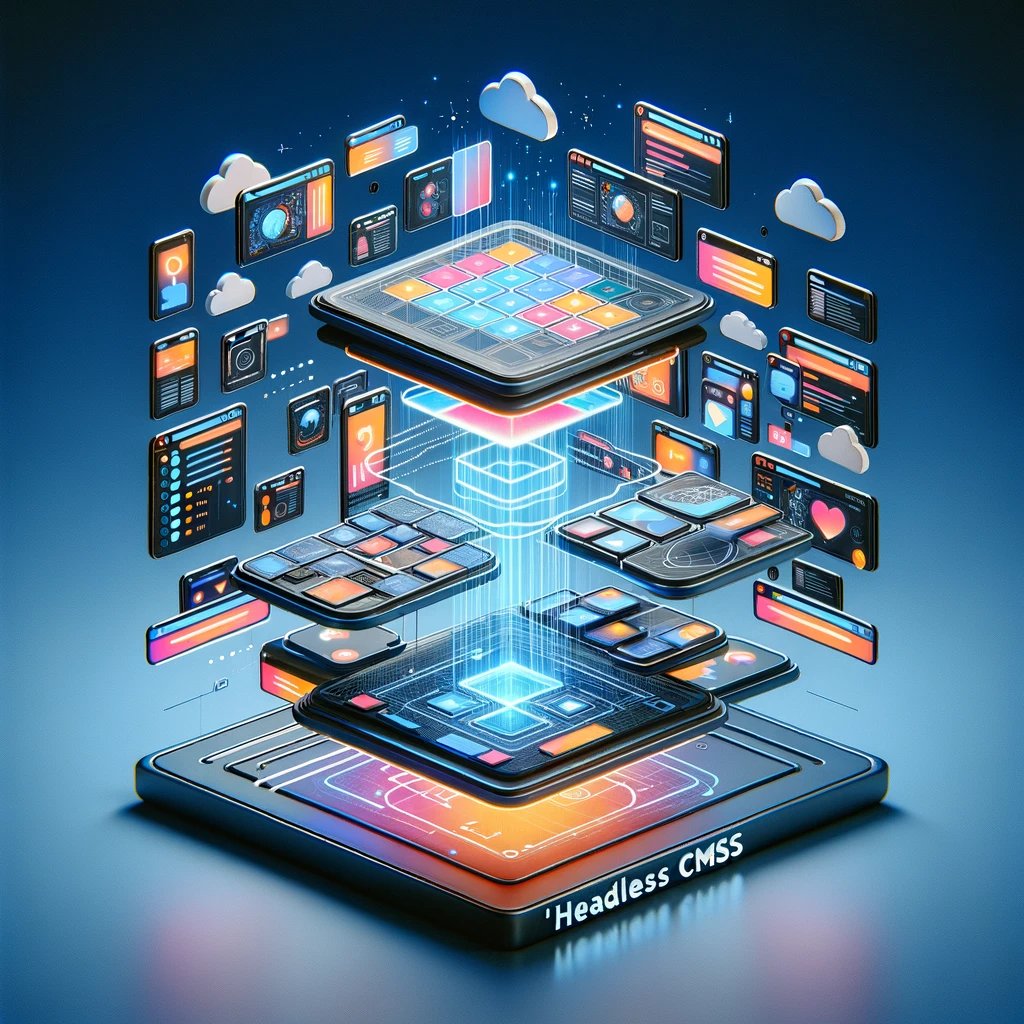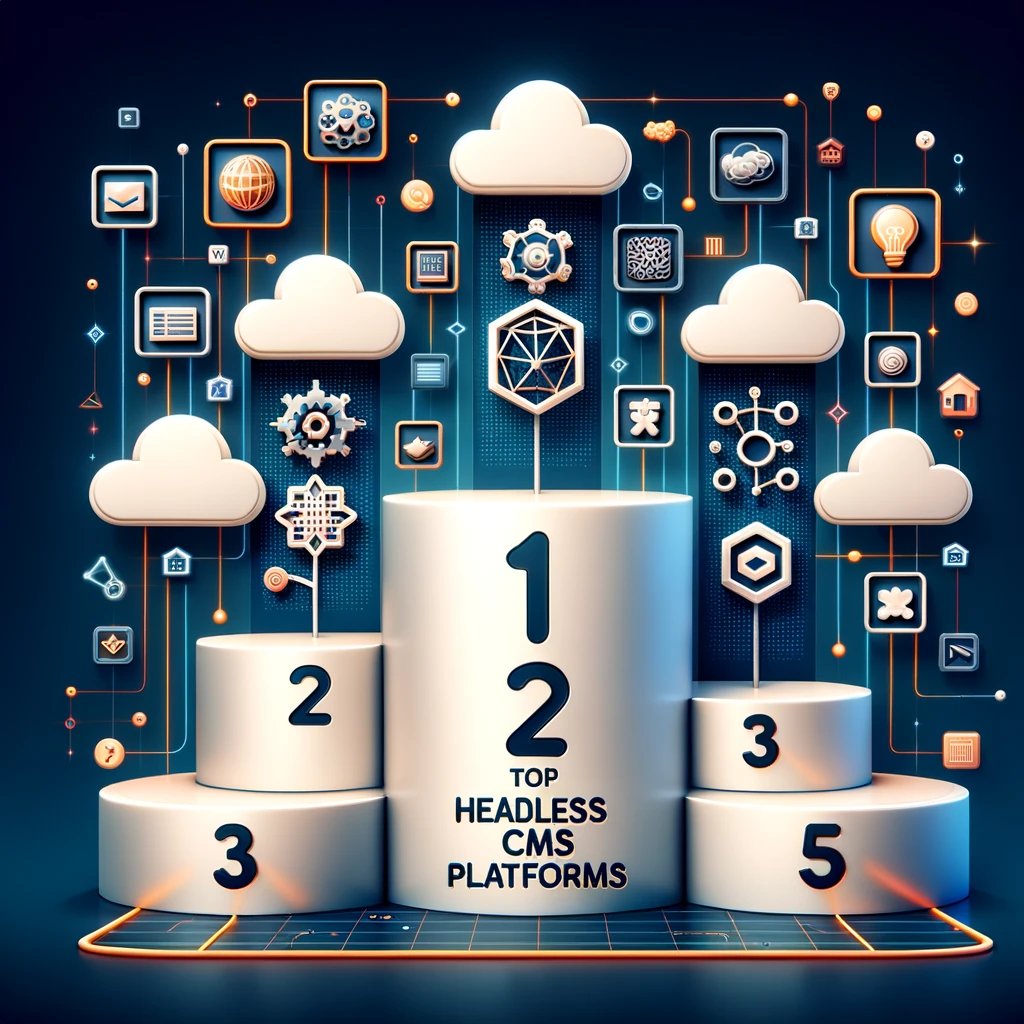Share this
The Best Headless CMS: Comprehensive Comparison
by Tom Imboden on Mar 13, 2024 6:44:31 PM
I wrote this article with my team at Organic to help high traffic website owners discover the top headless CMS options available in the market, as well as make more informed decisions about how to grow audience and earnings. It's particularly relevant to the popular Reddit thread and associated dialogue: "Headless CMS recommendations."

Understanding the "Headless CMS" value proposition
A headless CMS is a content management system that allows content creators to create and manage content without being directly connected to the specific front-end presentation layer. Unlike traditional CMSs, tied into a specific website or application, a "headless CMS" publishes content in a structured format via an API, allowing it to be displayed equally well on all the various platforms and devices.
- To illustrate in lay terms: Think of a headless CMS like a gourmet kitchen that prepares delicious meals (content) to be served anywhere, from street corners to private events. The gourmet kitchen (CMS) focuses on crafting delicious food without worrying about ensuring a premium experience for how and where diners will eat it—whether on a fancy wedding plate or a sturdy compostable tray at a festival. This flexibility allows the gourmet kitchen to deliver top-notch culinary experiences across diverse settings — much like a headless CMS delivers content seamlessly across various platforms.
One of the key concepts of a headless CMS is separating the back-end content management functionality from the front-end presentation layer. The separation affords developers more flexibility and freedom when designing and delivering content optimized for various channels, such as websites, mobile apps, smart devices, and more.
To be clear, the division of Amazon Web Services / AWS servicing high-traffic websites recommends using a headless CMS, especially when integrated with high-end monetization tools, and cross-channel analytics.
![]()
Now,this graphic, I gotta say, is legit. Wow.
Top 5 Features to Look for in a Headless CMS
When choosing a headless CMS, there are five key features to consider:
- API capabilities: Look for a CMS that offers a robust and flexible API, as this will be the primary method of accessing and retrieving content. For those technically inclined, GraphQL is a query language for APIs and a runtime for fulfilling those queries faster with your existing data.
- You can think of GraphQL APIs like a hyper efficient school cafeteria, where students instantly fill their tray with exactly the foods and amounts they like. Now, instead of grabbing a pre-packed lunch box with items they might not eat, GraphQL allows students to only get their specific desired package —pizza, but no salad; fries, but no apple ——> In essence, the GraphQL API cafeteria provides a meal that's perfectly tailored to each student's taste, no more, no less (making lunchtime faster, more enjoyable, and more cost effective/efficient).
- Content modeling: Ensure that the CMS allows you to define and structure your content in the right way that makes sense for your specific needs.
- React (also known as React.js or ReactJS) is a free and open-source front-end JavaScript library. Think of building a website with React and Next.js, like constructing a LEGO set with custom bricks. Normally, LEGO sets come with predefined pieces you assemble according to instructions. React gives you the power to design your own LEGO bricks (components) that can do exactly what you want—like a brick that can change color or shape. Next.js then takes these custom bricks and helps you build not just any model but a high-tech one that can automatically open doors, light up, or even move, making your creation more interactive and responsive, just like modern web applications. This combination lets you craft websites that are not only unique but also dynamic and user-friendly, perfectly tailored to your content's needs.
- Multi-channel support: Ensure the CMS can deliver content to multiple channels, such as websites, mobile apps, IoT devices, etc.
- You shouldn't have to stress over mobile vs. desktop, ever. If this is a concern, you should find a different provider.
- User-friendly interface: A user-friendly interface is important for content creators to easily manage and update content without relying on developers.
- WordPress is one of the most popular and widely used platforms for bloggers, content creators, journalists, and editors. It's known for its flexibility, extensive customization options through themes and plugins, and a large community of users and developers.
- Scalability: Consider the scalability of the CMS, especially if you anticipate your content needs to grow over time.
i.e. it's about the ~hundreds of thousands, ~millions, ~tens-of-millions, ~hundreds-of-millions of visitors per month AND
the ~thousands, ~tens-of-thousands, ~hundreds-of-thousands, ~millions of dollars a month in revenue that comes with it.
By evaluating these five key features of a headless CMS provider's offering, you can find a headless CMS to meet your business requirements, and allow you to deliver content more seamlessly across the various digital channel ecosystem.
Top Headless CMS Platforms
There are several top headless CMS platforms available in the market today. Here are some of the most popular ones we've found working in the industry:
- Contentful: offers cloud-enabled headless CMS with API and content modeling capabilities.
- Prismic: headless CMS with a user-friendly interface and customizable content.
- Organic: Organic is a headless CMS with integrated monetization tools and cross-channel analytics.
- Strapi: Strapi is an open-source headless CMS that allows developers to build quickly.
- Sanity: Sanity is a headless CMS that offers a collaborative environment for content creators and developers.
- Kentico Kontent: Kentico Kontent is a cloud-enabled headless CMS that provides content management and delivery features.

LFG, AI Image generator!
These are just a few examples of the top headless CMS platforms available. Each platform has its own strengths and features, so it's important to evaluate them based on your specific requirements.
Pros and Cons of Each Headless CMS Platform
While each headless CMS platform has its own advantages and disadvantages, here are some common pros and cons to consider:
Contentful:
- API, flexible content modeling, scalable infrastructure
- Higher cost for larger projects, steeper learning curve for non-technical users
Prismic:
- User-friendly interface, customizable content structures, entry-level pricing
- Limited API capabilities and less flexibility in content modeling
- Enhances WordPress to help publishers increase their audience and earnings through optimized content delivery and management
- Lightning-fast headless frontend, SEO-focused content blocks, syndication controls, and no-code ad and affiliate revenue optimizations
Strapi:
- Open-source, easy to use and customize, extensive plugin ecosystem
- Less mature compared to other platforms, limited enterprise-level support
Sanity:
- Real-time collaboration, flexible content modeling, customizable workflows
- Higher cost for larger projects, limited third-party integrations
Kentico Kontent:
- Wide range of content management features, and strong developer support
- Higher cost compared to some other platforms, a steeper learning curve
Making the Right Choice for Your Business
Choosing the right headless CMS for your business is an important decision, which affects critical business outcomes.
Choosing the right headless CMS for a high traffic website is akin to selecting the right foundation and materials for a skyscraper building. The wrong choice can lead to structural issues, making the building unsafe and uncomfortable, eventually leading to its abandonment.
Conversely, like the best materials and design, the right CMS ensures a stable, welcoming environment that keeps creators and visitors engaged and satisfied, fostering growth and success.

We should maybe hang this up on our wall at work.
By carefully considering these factors and conducting thorough research, you can make an informed decision and choose the best headless CMS for your business.
For more questions about selecting a headless CMS, you can also reach out to Tom Imboden.
Share this
- June 2024 (2)
- May 2024 (3)
- April 2024 (1)
- March 2024 (4)
- February 2024 (1)
- January 2024 (11)
- December 2023 (1)
- November 2023 (2)
- October 2023 (3)
- September 2023 (3)
- August 2023 (4)
- June 2023 (1)
- May 2023 (3)
- March 2023 (4)
- February 2023 (5)
- January 2023 (3)
- December 2022 (1)
- November 2022 (2)
- October 2022 (2)
- September 2022 (1)